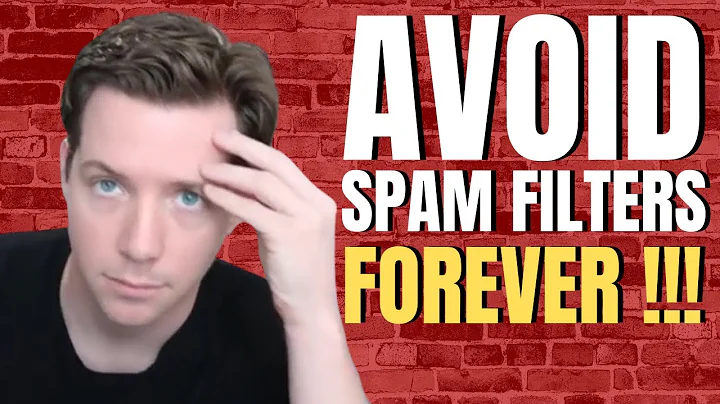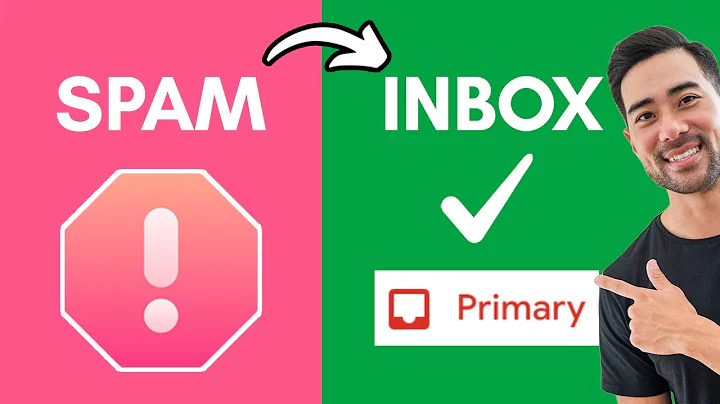How to prevent mail from our website going into spam mail of users?
Solution 1
Spam filters are refined based on what makes email unwanted by the recipient. Therefore, tips to make your message less likely to be classified as spam have a lot of overlap with good email etiquette generally:
Consider not sending the message at all. Exactly what makes the message relevant to and wanted by the recipient? If you don't have an answer that would be convincing to most recipients of your message, don't send it. Sending unsolicited bulk messages is the definition of spam and you should not be surprised if they are treated that way.
Ensure the sender domain has correct DNS setup. This includes correct A and PTR records for the sending host, correct NS and MX records for the sending domain, and so on; see the relevant standards for more.
Conform to mail server conventions. Ensure your mail system conforms to conventions like accepting mail to
abuseandpostmaster, and other recommendations from RFC Clueless. Also consider implementing SPF and DKIM to better describe what is and isn't valid email from your domain.Use plain text. In many cases there is nothing important added by HTML formatting that you can't get by simple plain-text formatting conventions. Yet HTML does add a lot of complication and fragility to the message. There's also no standard for how HTML should be rendered from email, so your message can easily be garbled or look terrible, whereas a plain text message will be much more likely to display properly. The fact that plain text looks far more like a legitimate message to filter programs is a big benefit.
Avoid attachments. If you have to direct the reader to a file, put it online and reference its URL in the plain text message; this is also kind to the recipient since they get to choose the time and place where the file will be retrieved.
Choose an appropriate Subject field value. Make sure the Subject is a concise summary of the topic of the message, like a newspaper article headline. Include the abbreviation for the relevant organisation, so that the recipient is already likely to have that term in their list of “good” words.
Keep it brief and on-topic. Keep the message short and to the point, with just the important information. If you need to go on at length, it's probably better as an article online, with the email message being a brief synopsis and a URL to the full article.
Avoid cruft. Don't include any boiler-plate footers of unenforcible legal nonsense, or chatter about the software or service used to send the message. Certainly don't add any logos or any other gunk that isn't germane to the message. If there needs to be a reference to any of that, a single line with one URL is enough.
Solution 2
There's no magical method of keeping your emails from being identified as spam. If there was, then spammers would exploit it and the magic would have to be turned off.
Bignose's post raises a very good few points, but I think you can reduce the problem to fundamentals
- You will always get some automated systems, even some users, who identify your posts as spam, no matter how honest your sign up process and how hard you work. Accept that.
- Your email must not look like spam. It should be personalised, avoid boiler plate as much as possible, be direct and to the point, and stay away from certain spam trigger phrases.
- Your email server must behave properly. It must be a well-behaved emailer. It needs to follow the standards for email server behaviour as well as possible. I can only echo bignose's advice to follow email standards in both terms of abuse reporting and stuff like that, and also for things like DNS records.
- There are also several feedback loop services you can set up with very large ISPs/email hosts like AOL, Hotmail, etc. Sign up to these and act promptly on the reports and info gathered.
Solution 3
I don't seem to have enough "rep" to be able to edit bignose's post, but I just wanted to add SPF to his (already excellent) listing. It's (more or less) a record of who is permitted to send email for your domains listed in a DNS TXT record.
http://en.wikipedia.org/wiki/Sender_Policy_Framework
Solution 4
In addition to bignose and Robert Moir, i suggest investigate some cases of spam detection.
Ask some of yours students forward as attachment one message detected as spam. Many spam filters add headers describing how spam detected. Attempt contact administrator of antispam system wich detect your mail as spam. If your messages really not spam, you can get help.
Related videos on Youtube
evseevnn
Updated on September 17, 2022Comments
-
evseevnn almost 2 years
I work for an educational services company based in India. We've around one million students enrolled as users. We're frequently facing the problem of our bulk mailers regarding upcoming exams, new product launches and promotions going into spam mail folders of the students. Is the problem in the headlines? Or where else? what can we do to reduce this number? This is killing us, we cannot have an impossibly large precentage of mails not being opened..Please help.
-
 Brian Postow about 14 yearsSo you're sending out mass mailings with advertisements and promotions... Is it possible that your messages ARE spam?
Brian Postow about 14 yearsSo you're sending out mass mailings with advertisements and promotions... Is it possible that your messages ARE spam? -
 Aaron over 8 yearsIf you must do this and you dont have the infrastructure, experience, a team to respond to UCE complaints, then just outsource to a an email campaign provider. They have everything listed in all the answers, plus the legal experience to know where the limits are.
Aaron over 8 yearsIf you must do this and you dont have the infrastructure, experience, a team to respond to UCE complaints, then just outsource to a an email campaign provider. They have everything listed in all the answers, plus the legal experience to know where the limits are.
-
-
vonbrand over 8 yearsMost importantly, make sure the mail is relevant for the recipient.
-
vonbrand over 8 years@bignose, it used to be that use of SPF and similar was a sure sign of spam....
-
evseevnn over 8 years@vonbrand, thanks. I talked all around that point but somehow managed to avoid addressing it explicitly. Fixed now.




